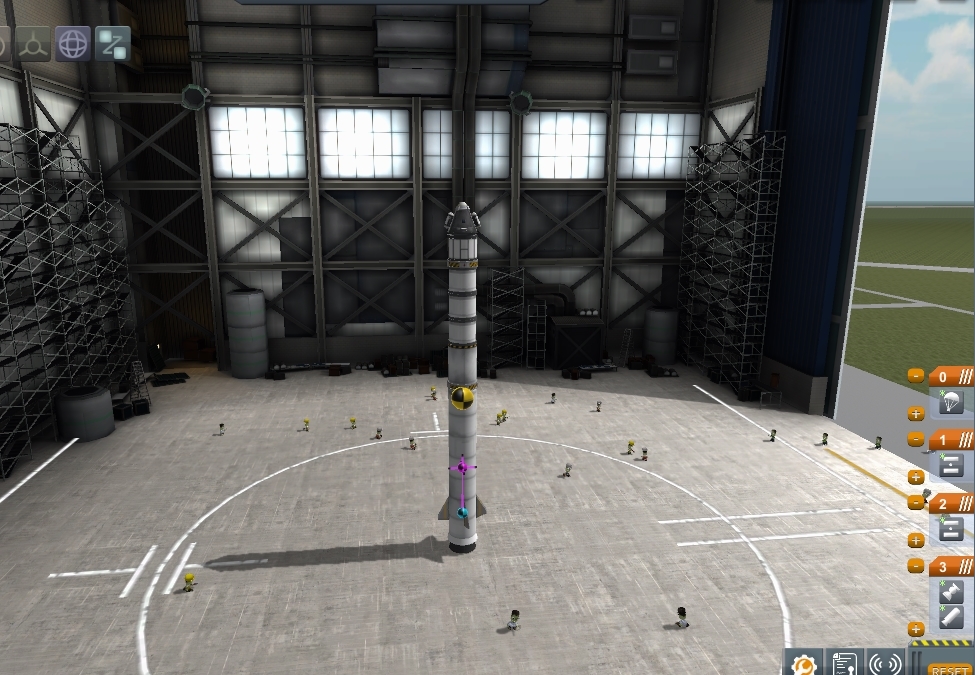
It is also where the downward force of gravity pulls down on the rocket or plane.

(!) The Center of Mass of an object is a static property of an object. The point in space where your finger is placed to balance the object is where the center of mass is located. Let’s look at the various centers and vectors next.Ĭenter of Mass (CoM) – Indirectly represents the Gravity Force Vectorīalance an object on the tip of your finger. A force is a vector it acts on a center and pushes in a certain direction with a certain amount. Now we can look at forces acting on a craft in atmosphere (aerodynamic forces of lift and drag) under gravity (force of gravity) using its engines (force of thrust). Either use ‘mass’ or ‘(force of) gravity’, but definitely not ‘weight’, okay? Let’s agree not to use the word ‘weight’ anymore. Hint If you see the word ‘weight’, simply substitute it for ‘force of gravity’.
#Kerbal space program rocket flips how to
It always requires a bit of experience to judge the correct profile.Kerbal Space Program – How to build a rocket If the profile was correct, you would have gained considerable horizontal speed already, and with a final burn when aoutside the atmosphere you'll get to the orbital speed. Start looking at the apoapsis altitude in the map view, you need to achieve 70-75 Km: so, throttle down if you are already at that value.

Apply some angle (never more than 5°, the size of the prograde marker of the navball) if needed to start gaining horizontal speed. So, you need to angle the nose of your rocket just a little at a time in the correct direction (generally, pitch down towards heading 090°), the smaller the angle, the more similar the ascent profile is to a true gravity turn (the most efficient profile).ģ) After the separation of the second stage, rocket will be much more maneuverable (due to less moment of inertia, but also due to lower aerodynamic effects on the fins).

Not pitching enough will not provide the horizontal speed required, in the end you need a horizontal speed of about 2200 m/s for a LKO. Sure, you want to pitch down during the ascent, but pitching too fast will make the rocket travel within the lower and denser atmosphere for longer, and drag will waste much of your DV. Ģ) during ascent, always keep the nose of the rocket very close to the prograde direction. With a CoL much lower then the CoM, the rocket will be very hard to steer, but that is not so bad during the ascent, because. Place fins at the tail so the Center Of Lift is visibly lower then the Center of Mass at all times. My suggestions for a successful orbit are:ġ) stability: while building the rocket, each stage must remain stable even when almost empty of fuel. I'd suggest not to rush for the orbit goal, unlocking more techs will certainly make the achievement easier.Īnyway, here is the pic of a 2-stage rocket able to achieve orbit with just those few parts (Reliant engines, FL-T200 tanks, small fins), without too much correction and not even SAS.


 0 kommentar(er)
0 kommentar(er)
